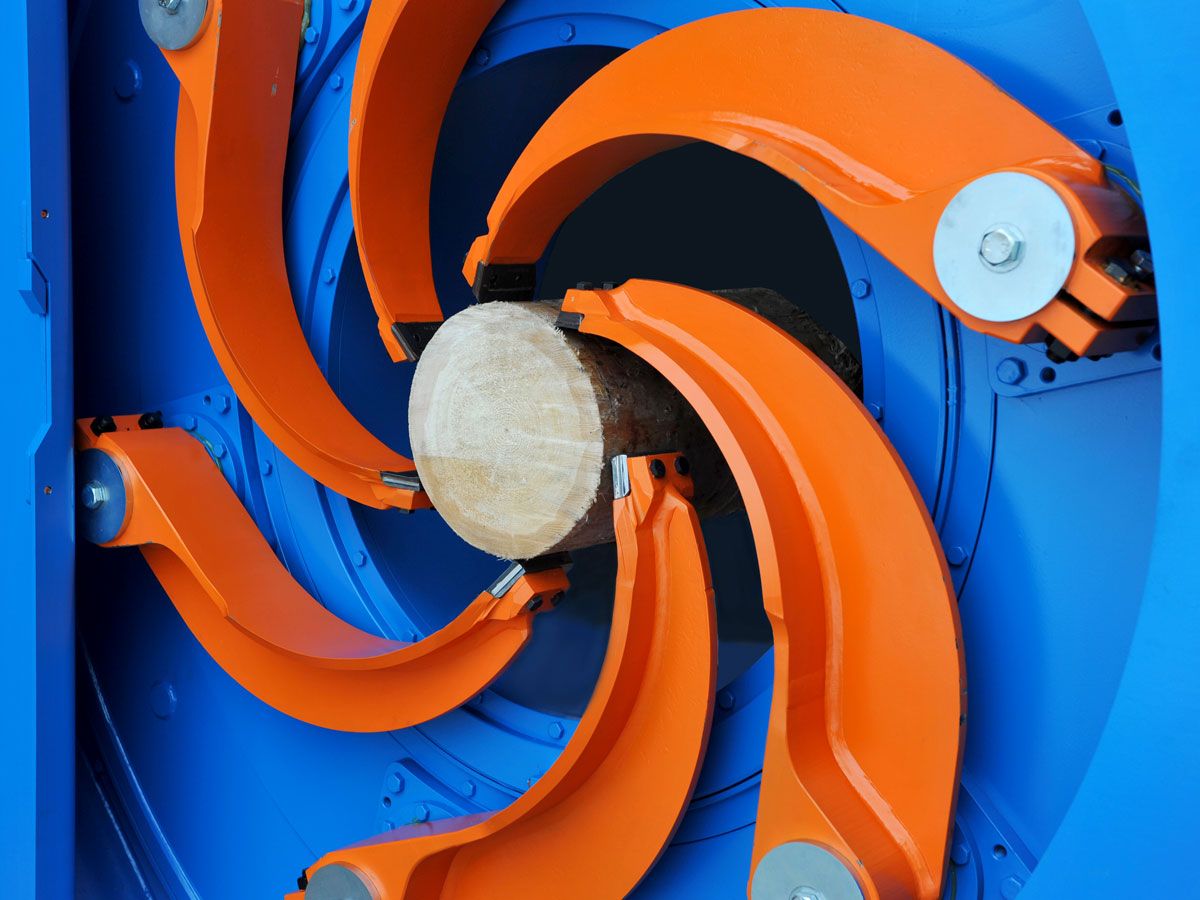Rotor Debarking
Efficient and economical debarking method

- A common reason for debarking is related to quality requirements concerning the woodchips produced as by-product. The chips, used as raw material in pulp industry, must be sufficiently clean to be suitable for producing pulp, which is then made into paper.
- Efficiency and cost savings are other reasons for introducing debarkers in sawmills or veneer/plywood factories. For instance, tool maintenance costs are significantly reduced in sawing and veneer peeling processes when debarking is in process. The reduced need for tool maintenance makes maintenance downtime less frequent and improves the efficiency of the process.
- In chipboard and OSB industry, wood is also debarked before the manufacturing process, even though the requirements on the cleanliness of the raw material are not as strict as in the pulp industry. Used raw material is normally of a lower quality, which means that rotor debarking is not justified – with a few exceptions.
Whole tree debarking vs. log debarking
Wood is brought to a mill either as whole trees or as logs cut to specific lengths. At mills that process whole trees, debarking is normally performed before cross-cutting. This means that there is no diameter sorting for trees before they come to a debarker. Normally, feed speeds are relatively low when debarking tree-length wood. We have extensive experience in debarking whole trees regardless of the country and wood species.
Whole Tree
For debarking entire trees, a debarker with a sliding ring is usually considered as the first option. In some cases, air seal technology in the debarking rotor can facilitate the debarking/cutting process significantly. Air seal technology enables you to stop a log inside the debarker. This helps production flow when trees must stop for cross-cutting.
Cut-to-length Logs
Mills that use cut-to-length logs in their process can organize for debarking to occur either before or after diameter sorting. Debarking speeds are normally much higher when processing logs compared to whole tree lengths. By debarking logs after they are diameter-sorted, you can optimize debarker operation and run at the highest possible feed speed without damaging the raw material or the equipment itself. Many times, log length becomes a critical parameter since any debarking equipment has a limited capacity to handle short logs.